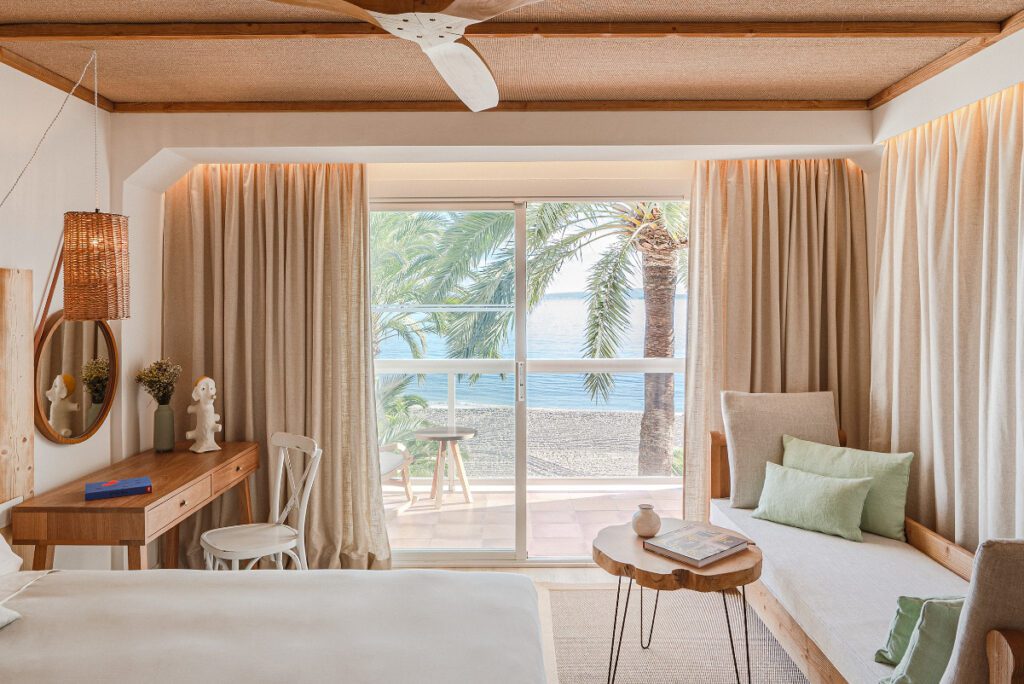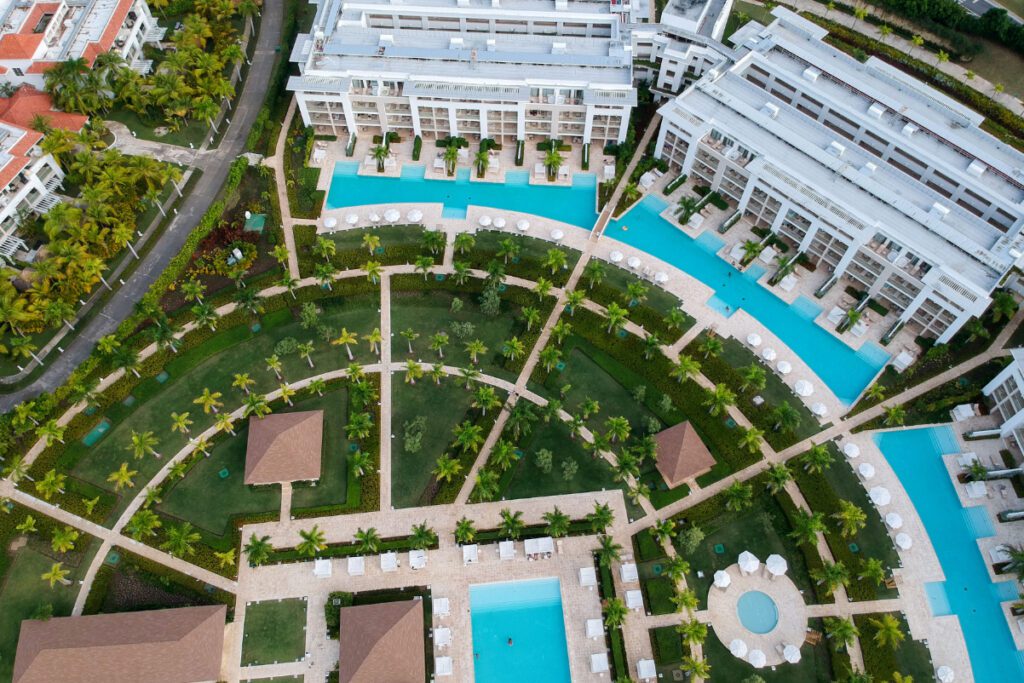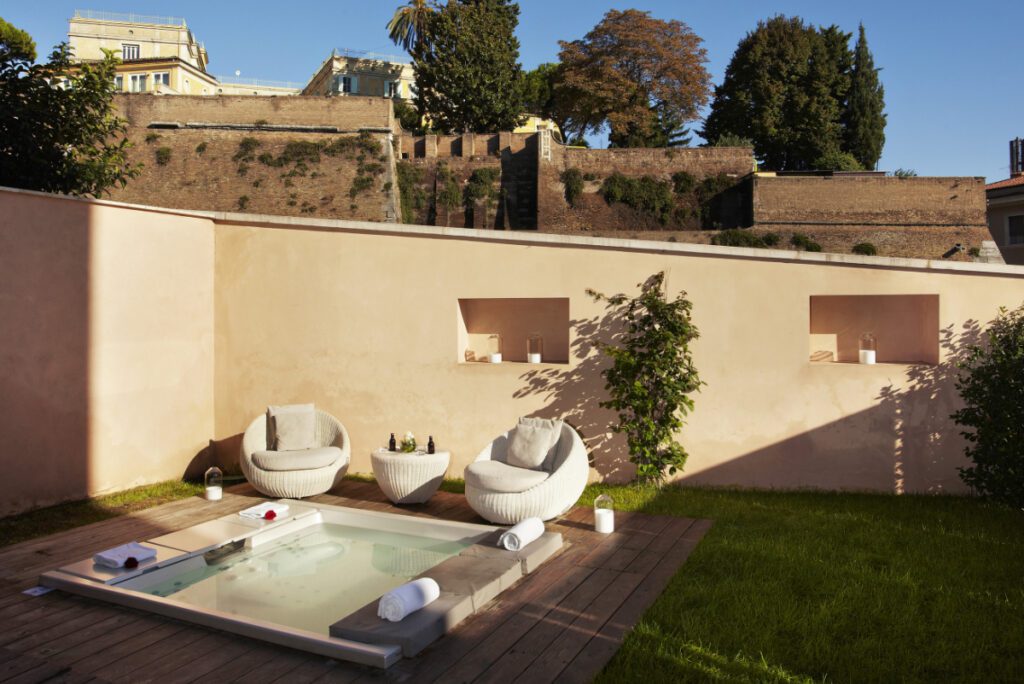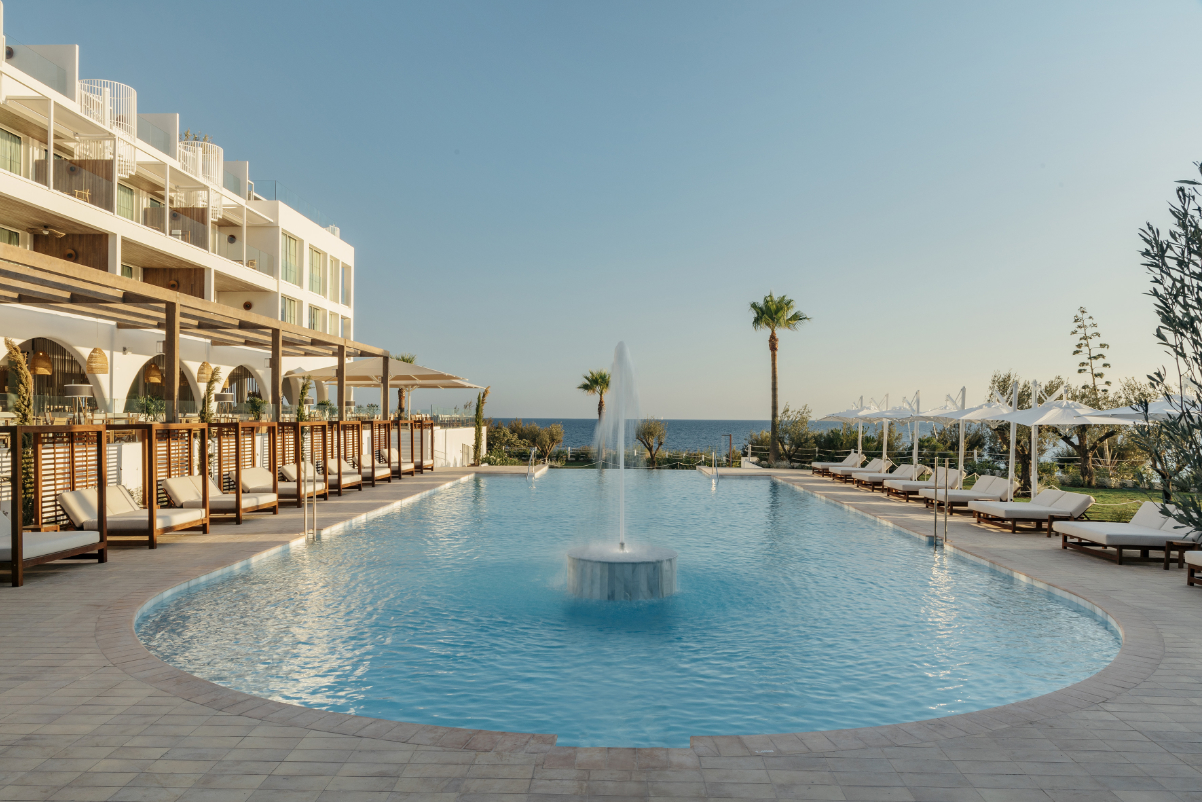Skift Take
We bet that Hyatt or one of its rivals will partner with Meliá by 2025, adding a bigger loyalty program and scale efficiencies. But the Spanish leader in resort locations worldwide should reject any offer that would dilute its strategy. Call it turn-down service.
Meliá Hotels International is Spain’s largest hotel and resort operator, aiming to grow its portfolio across the Mediterranean, the Caribbean, and Asia Pacific by 40 percent in the next three years. The Mallorca-based company, controlled by the Escarrer family, is open to selling a stake to a world player like Hyatt or Marriott. But its strategy in recent years could set it up to go it alone for much longer.
Meliá, with about 340 hotels in operation, has 62 properties with 15,000 rooms in its pipeline — nearly all in the luxury, lifestyle, and so-called upper-upperscale segments. In December, it launched its latest brand, Zel, in collaboration with tennis superstar Rafael Nadal.
While a publicly listed company, Meliá has 56 percent of its capital base owned by the Escarrer family — divided between investment vehicles they control and roughly 5 percent held by Gabriel Escarrer Juliá, the billionaire non-executive chairman of the group who founded the company at age 21. At the end of last year, the family bought another 1 percent of the company, reaching the 56 percent figure.
“If there is any other hotel company that will help us to increase our leadership in these areas, I’m sure the family won’t have any problem diluting below the 50 percent threshold,” said Gabriel Escarrer Jaume, CEO and vice-chairman. “But we will always lead this new company.”
Meliá reported its financial performance for 2022 on Monday. Last year the company produced a profit of about $117 million (€110.7 million) on operating income of about $1.79 billion (€1.69 billion) in revenue. The performance surpassed expectations by analysts surveyed by S&P Global.

About 80 percent of its portfolio comprises hotels and resorts in the Mediterranean and the Caribbean for short-haul leisure travelers.
“We’re the leader in both regions,” Escarrer said. “And we aim to become the leader in Southeast Asia.”
The remaining 20 percent of Meliá’s portfolio is mainly upscale, centrally-located city hotels that may appeal to a segment of guests as blended travel comes of age.
Meliá has about 15 million members in its loyalty program. But plugging into a bigger company’s loyalty program would help it juice its performance.
Expanding Beyond Spain
About half of Meliá’s revenue in 2022 came from Spain.
“We don’t want to do anything to jeopardize our leadership in Spain, a country that’s the second- or third-largest tourism destination in the world,” Escarrer said. “Having said that, 92 percent of our development pipeline is outside the country.”
“We want to consolidate all our leadership in countries such as Spain, Cuba, Mexico, Portugal, and Vietnam,” Escarrer said. “But at the same time, we want to also grow in places like Albania, Malta, Saudi Arabia, and Seychelles.”
In Southeast Asia, Meliá has about 50 hotels in operation or development.
The hotelier often takes a high-design approach in emerging markets like the Middle East. The luxurious ME by Meliá Dubai is the only hotel in the world to be designed by the (now late) architect Zaha Hadid.
At its hotels in capital cities, Meliá has looked to create bars and restaurants that attract both guests and locals, aiming to generate half of their revenues outside of rooms.
For city or resort properties, Meliá looks for partners whenever possible. A case in point is the 17 Tryp hotels it has been operating for some time. In January, Meliá signed a deal with the Abu Dhabi Investment Authority to sell the assets, with Meliá continuing to manage them.
In Punta Cana, it partnered with Falcon’s Beyond, a global entertainment development company, to create the new Falcon’s Resort by Meliá All Suite Punta Cana. Opening in March, the resort includes in its daily rate access to a new theme park, Katmandu Park | Punta Cana.

Hyatt Is Fishing in Europe
Meliá has already fielded preliminary partnership and acquisition offers from large international groups. But Escarrer wouldn’t be drawn into a guessing game about possible world giants that might take a stake in it.
But it’s hard not to make an educated that Hyatt may top the list, given that its executives have said in recent months they’re eyeing Europe in particular as a popular destination for American and Chinese travelers.
With about 1,200 hotels worldwide, Hyatt has been eager to plug its supply gaps in Europe, especially with resorts and luxury properties. In late 2021, Hyatt bought Apple Leisure Group for $2.7 billion (€2.3 billion). The deal let the Chicago-based firm expand in Europe with 100 hotels and resorts. In Spain, it has become the fourth-largest hotel group by room count.
Notably, Hyatt’s president for Europe, Javier Águila, is a Spaniard familiar with deal-making, having found investors to create the European chain Alúa that grew to 53 hotels and was bought by Apple Leisure Group. Águila has knows Meliá well.
Hyatt intends to sell about $1.3 billion in hotel real estate by the end of 2024. Those sales, plus roughly $1 billion in cash on hand, might enable it to acquire a strategic stake in a business like Meliá.
What might Meliá’s value be? In 2022, its earnings before interest, taxes, depreciation, and amortization in 2022 was $456 million (€430.8 million).
Given that the latest Aman Resorts investment was done at about 17 times expected earnings for 2022, and Accor’s recent Ennismore luxury and lifestyle deal was at about 18 times expected 2023 earnings, Mélia, with not quite as much luxury in its portfolio and apparently more debt, might fetch at least 12 times earnings, or about $5.5 billion, according to Skift’s estimates.
A strategic partnership rather than an outright acquistion might be another approach a buyer foreign to Spain might take.
A possible partnership could conceivably be similar to a deal Hyatt made last year with the Lindner family in Germany, which brought into its portfolio 5,500 rooms across most of the Lindner hotels and resorts in 15 European cities — without taking the Lindners out of the business of hotel development.
Hyatt isn’t the only game in town, of course. Other players might be interested in expanding into Europe’s resort markets — especially U.S.-based companies looking to add inventory that can be used to incentivize sign-ups to their rewards-based loyalty programs. Names such as Marriott and Wyndham come to mind. Meanwhile, UK-based IHG may want to increase its resort offerings for similar reasons.

Meliá’s Strategy
Perhaps to become more attractive to potential partners, Meliá has leaned into luxury with its latest brands, such as the Gran Meliá, the ME, and the Meliá Collection.
“We’ve established a strong relationship with the Leading Hotels of the World as a brand extension,” Gerondeau said. “That has helped tighten the relationship with Virtuoso, American Express Fine Hotels and Resorts, and other consortia.”
The company has also evolved how it creates brands for a new generation of consumer behaviors.
“We’ve been working more of the psychographic profile of the customer than the demographic profile of the customers,” said André Gerondeau, chief operating officer. “The premium portfolio is really a driver of the company that pushes the other brands up.”
“For example, in the all-inclusive segment, we understand that there has been a vanilla flavor that we want to move away from as much as we can,” Gerondeau said. “The evolution of the all-inclusive has been very interesting, and we feel there’s a niche for lifestyle, luxury, or upper-upscale there.”
The company’s Paradisius brand, for instance, is quasi-luxurious. The resorts in Cancun, Playa del Carmen, and Los Cabos offer all-inclusive packages for families plus a “hotel within a hotel” with rooms and suites for adults only.
Today’s consumers often want a “sense of place” in their travels, and Meliá aims to satisfy that desire.
“A number one attribute of the concept for us is the destination,” Gerondeau said. “We want to ensure customers are encouraged not to stay 24 hours, seven days in a self-contained resort. There’s encouragement to visit local attractions, whether it’s a national park, a dormant volcano, or a theme park. We even give credit for meals at local restaurants in the surrounding area.”
Debt Load
Managing debt remains an issue. On Monday, Meliá said its net debt stood at about $2.8 billion (€2,673 million) — a reduction of 180.2 million during the year.
A recent Deutsche Bank Research report about the company said they expected the ratio for net debt to earnings before interest, taxes, depreciation, and amortization to be about 5 at the end of the 2023 fiscal year. That’s a relatively high debt load compared to peer companies of its size and sector.
Executives said they’ve gotten better at running their business more efficiently and that asset disposals will help the company unwind some debt.
They also say they’ve reached a scale in operations and technology that, along with the size of their loyalty program, new brands, and increased growth through conversions, has delivered a more cost-effective growth formula than a decade ago.
Yet some potential buyers or investors in Meliá may be reluctant to add real estate and liabilities. These are elements of potential speedbumps on the path to a deal. Meliá’s leadership has also insisted that they want to retain a leadership role, which might aggravate some potential acquirers or partners. Perhaps the answer is a loyalty program joint venture, with some sharing of back-end technology.
Boosting Direct Distribution
Without waiting to plug into a global brand’s loyalty program and distribution engine, Meliá has wrested more control of its distribution on its own. That helps it reduce the fees charged it by third parties.
Many resort operators in Europe, the Caribbean, and Southeast Asia rely on tour operators and travel agencies to fill their rooms. About 15 years ago, Meliá did the same, with two-thirds of its sales coming from tour operators. Now it receives less than 20 percent from them, Gerondeau said.
In 2019, bookings through melia.com represented 36 percent of sales. Today, direct bookings account for roughly 50 percent of sales. That trend may improve the company’s ability to build direct customer relationships.
Cultivating Talent
Meliá said it has been strategic in its hiring, believing that talented labor is a precious resource in a high-touch industry like hospitality.
“Unlike many hospitality companies, during the hardest times of Covid, in cases where our people were working in countries that lacked asupport system and it was really challenging, we paid their salaries for the first three months while hotels were closed, and after that, we paid for their accommodation and food,” Escarrer said.
Many younger employees particularly want to work for an employer with a sense of mission. S&P naming Meliá as the most sustainable hotel company in Spain and Europe for a few years since 2019 has helped with hiring and retention, executives said.
Regenerating Destinations
Meliá supports the regeneration of destinations in collaboration with locals, it said. That’s important because a handful of resort towns where the operator has long had a presence suffered in the pandemic and have been unable to refresh aging infrastructure and amenities, such as upgrading roads, improving taxi service, and doing upkeep on beaches.
“We have a saying in the company that ‘Destination goes first’,” Gerondeau said. “Unless we reposition a mature destination to continue to attract demand, we will have a very long struggle with our assets. So we work in parallel with local stakeholders.”
In Magaluf, a holiday resort on the Spanish island of Majorca, about 95 percent of Meliá’s business was UK visitors who had made it a habit to visit there. But the locality needed an upgrade to attract first-time visitors from other markets considering it. Meliá has about 3,500 rooms there.
Meliá’s core for 67 years has been its resort business. Out of the world’s top 30 largest hotel companies, Meliá is the only one that began as a resort rather than a city brand, executives said.
“We are more used than other companies to engaging with our customers for seven or 15 days,” Gerondeau said. “We know better how to create a relationship through experiences, which is a growing expectation with today’s travelers.”
Have a confidential tip for Skift? Get in touch
Tags: all-inclusive, all-inclusive resorts, earnings, future of lodging, hotel development, hotel earnings, hotels, luxury hotels, melia, melia hotels, melia hotels international, resorts, spain
Photo credit: Located in Spain’s Balearic Islands in Menorca, Villa Le Blanc by Gran Meliá opened in July 2022. Source: Meliá Hotels International.
